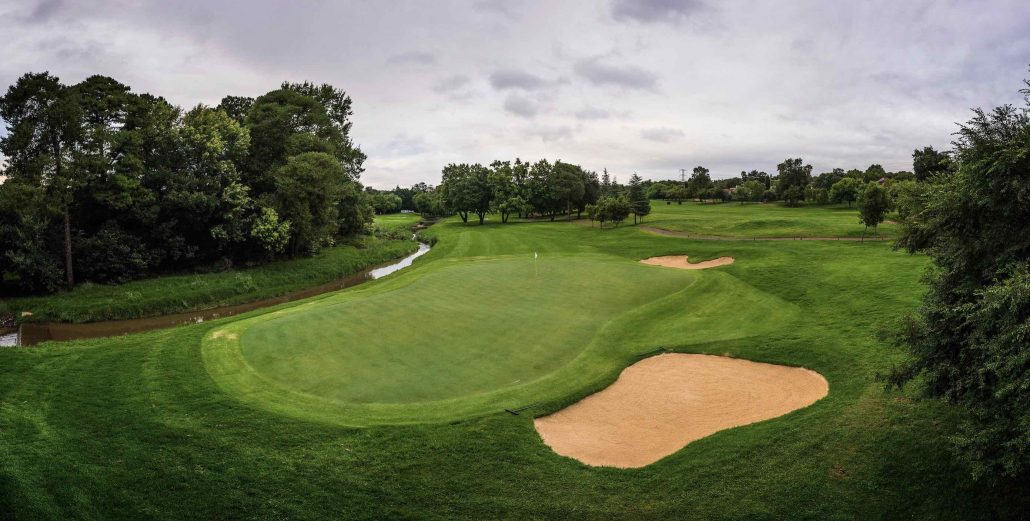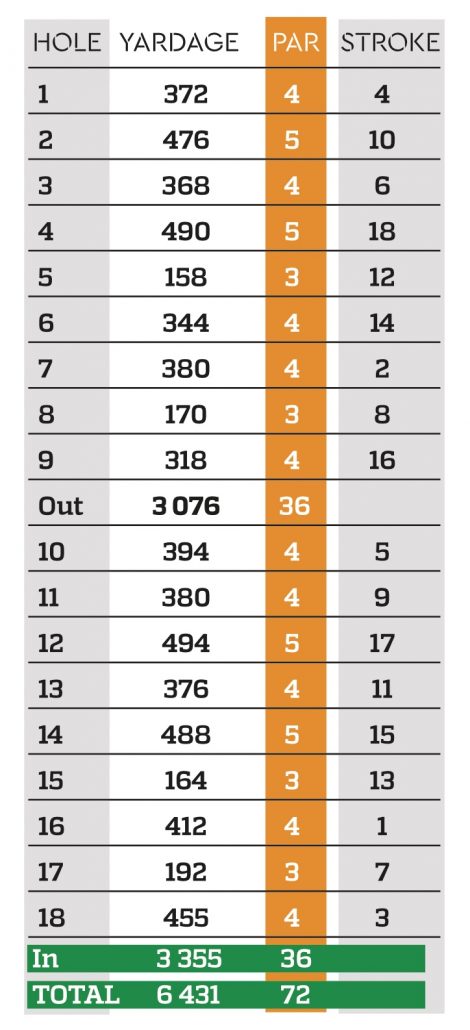Randpark’s Firethorn course will appeal to everyone who likes a challenge, writes SIMON OSLER.
From the top professionals who have tackled it from the back tees, to the ladies and seniors who must produce their best form from the forward tees, Firethorn brings out the competitor in everyone.
At the highest level, Retief Goosen won the SA Open here in 1995 by beating Ernie Els by five strokes, Louis Oosthuizen and Branden Grace have won that title here in the past five years. It’s a course that sees quality play rewarded.
Set in Johannesburg’s northern suburb of Randburg, Firethorn is the ‘senior’ course at the club, ahead of the slightly easier Bushwillow track.
The course has plenty of defence to protect par. It is long, has lots of thick rough, features plenty of water and well-placed bunkering, and has large, undulating greens.
Even though the greens had undergone a spring treatment just a week before I played, not to mention some torrential rains during the preceding month, their condition was very good and they rolled true. The greenkeeper had done an excellent job.
So let’s take a tour of the course.
The opening hole is a par four played from an elevated tee. The stream below should not be in play but the bunker on the left of the fairway will be for many players. Playing a gentle fade will put you in prime position on this dogleg to the right. The water down the left should not be in play but an accurate second shot is required to hit the green.
Going on to the 2nd hole, a medium-length par five, your drive across the river will again need a fade to put you in the best position. The river runs along the right side of the hole but it should not be in play. It would require two big and accurate hits to reach the green in two, so discretion is the watchword. A solid drive up the middle, followed by a 7-iron to the 100m marker and a wedge to the green made par relatively easy to accomplish. For the European Tour events, this hole is usually played as a par four, reducing the course by a stroke to a par 71.
The 3rd is a shortish par four with the dogleg going from right to left. Bunkers down the right will catch that errant tee shot, and there are two more guarding the front of the green. Aiming for the middle of the green is prudent. If your yardage is between clubs, take the longer option as there’s less trouble towards the back of the green.
The 4th, the second par five, is again an easy hole to par but tough to birdie. While the wide-open fairway encourages the big drive for those who can ‘bomb it’, wayward shots will be snapped up by the rough, while tree trouble lurks down both sides. And there is plenty of greenside bunkering to avoid if you want to score well.
The first of the par threes is next up and positioning is important here. The entrance to the green is on the right and heading there takes the big bunker out of play. The long birdie attempt holds its line right to the cup. A couple of rolls more would have been a win, but it is great to be able to pick a line and see the ball hug it to the hole without so much as a bobble.
For the monster hitters on the professional Tours, the par-four 6th hole’s green is probably just about in reach with the driver. At 344m, less 10% for altitude, perhaps a quarter of the field might be tempted to ‘have a go’. For us ‘grandpas’ it’s a good tee shot and a mid-iron to the green, but again, it’s an easy par on a picturesque hole. Very enjoyable.
The 7th is a medium-length par four with the tee shot being from right to left and the approach shot heading back the other way towards the river which runs down the length of the hole. Another one for the shot-makers to manoeuvre the ball both ways. Probably a simple ‘bomb and gouge’ for the big hitters.
The 170m 8th has a massive green and when the pin is at the back it becomes a challenge to take it on. With water in play along the right and over the back, aiming for the middle of the green will take all the trouble out of play. Then you will need to rely on a solid lag-putting game.
The closing hole on the front nine is a short par four that the big hitters will consider a near-certain birdie. At 318m up the hill towards the clubhouse, the green is well protected by bunkers in the front and by the banking behind. Playing it the conventional way it is a driver, short-iron and two putts.
The 10th is a long par four. Lots of trees down both sides of this dogleg right. The fairway bunkers are just out of range, so all the greenside bunkers could not be reached either and scrambling to get up and down became necessary.
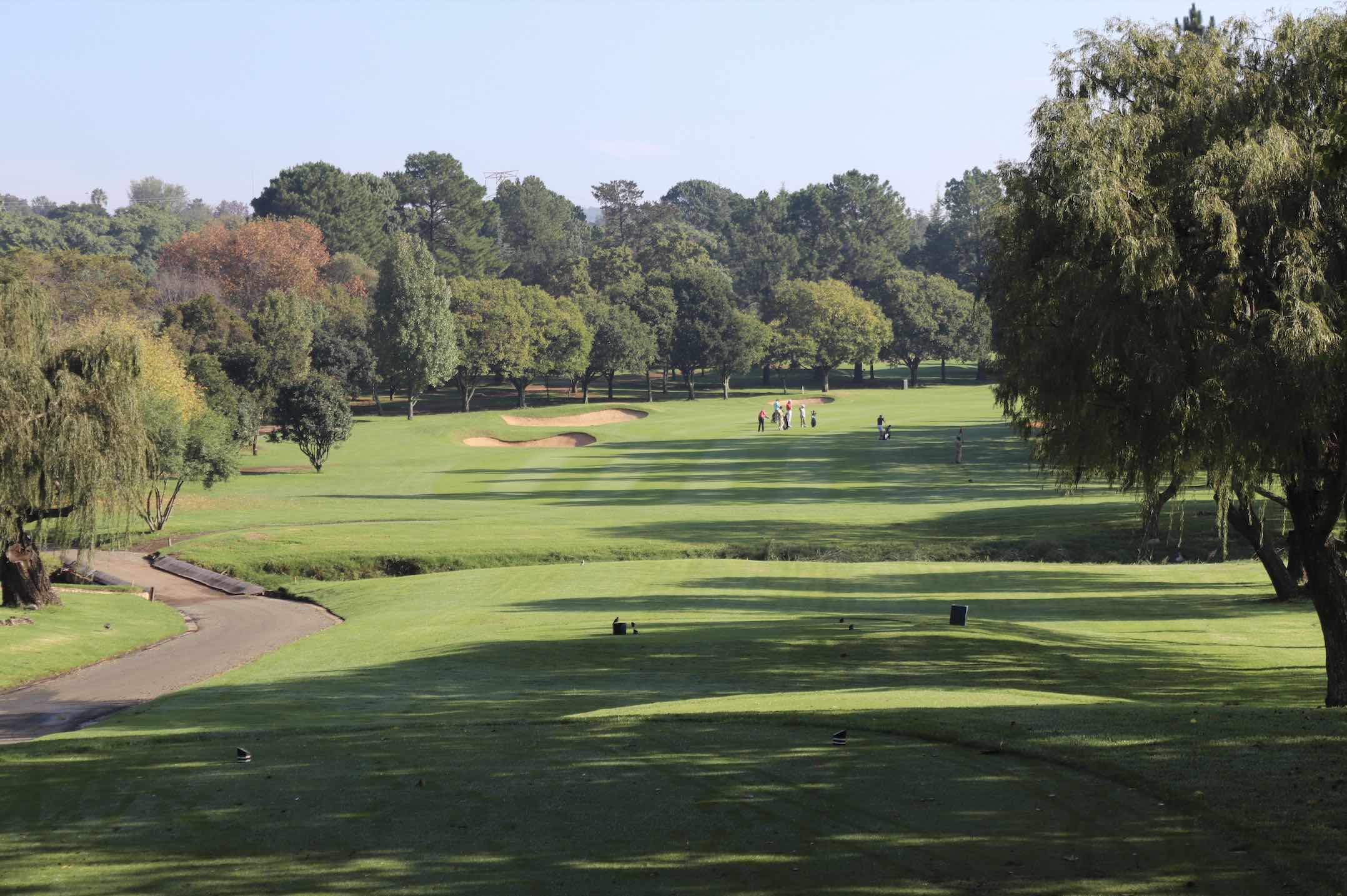
The 11th continues your journey northward, a par four of medium length. Avoid the bunkers on the left at driving distance and take the two sentry bunkers at the front of the green out of play by clubbing up one and aiming for the middle of the green.
The par-five 12th is a gentle dogleg to the right. It’s a three-shotter for all bar the longest hitters. Drive it up the middle, select a mid-iron and leave a wedge to the very large green. Take two putts and be satisfied.
At 376m and playing significantly downhill, the par-four 13th is a scoring opportunity. A good drive will leave you with a short approach shot to a green protected by bunkers on three sides. Approach from the left and take the bunkers out of play.
The par-five 14th is fairly narrow and requires precision with your second and third shots – make sure to avoid the sand trap guarding the approach to the green. Aiming right may reap rewards here.
The par-three 15th is probably the easiest of the short holes, especially for a straight hitter. Running the ball up from the front of the green will take all four bunkers, two on each side of the green, out of play. There is lots of slope on this fairly long putting surface, so make sure you get the pace right.
Finally, we reach the stroke one.
The par-four 16th is 412m, plays slightly downhill and has a large dam near the front of the green. You should try to hug the right side of the fairway to avoid trouble. If you stroke on this hole, consider it as a par five and play it conservatively. The bunkers on the right should be out of reach (particularly during the rainy season) and a short-iron strategically placed will leave a wedge in. Take the water out of play by aiming for the middle of the green. Better to concede one shot to par rather than two or three.
The par-three 17th is the signature hole. See below for a run-down on how to play it.
Your round is completed by a monster par four which measures 455m and plays steeply uphill towards the imposing clubhouse. This hole used to be a par five and for most club players it plays to that number.
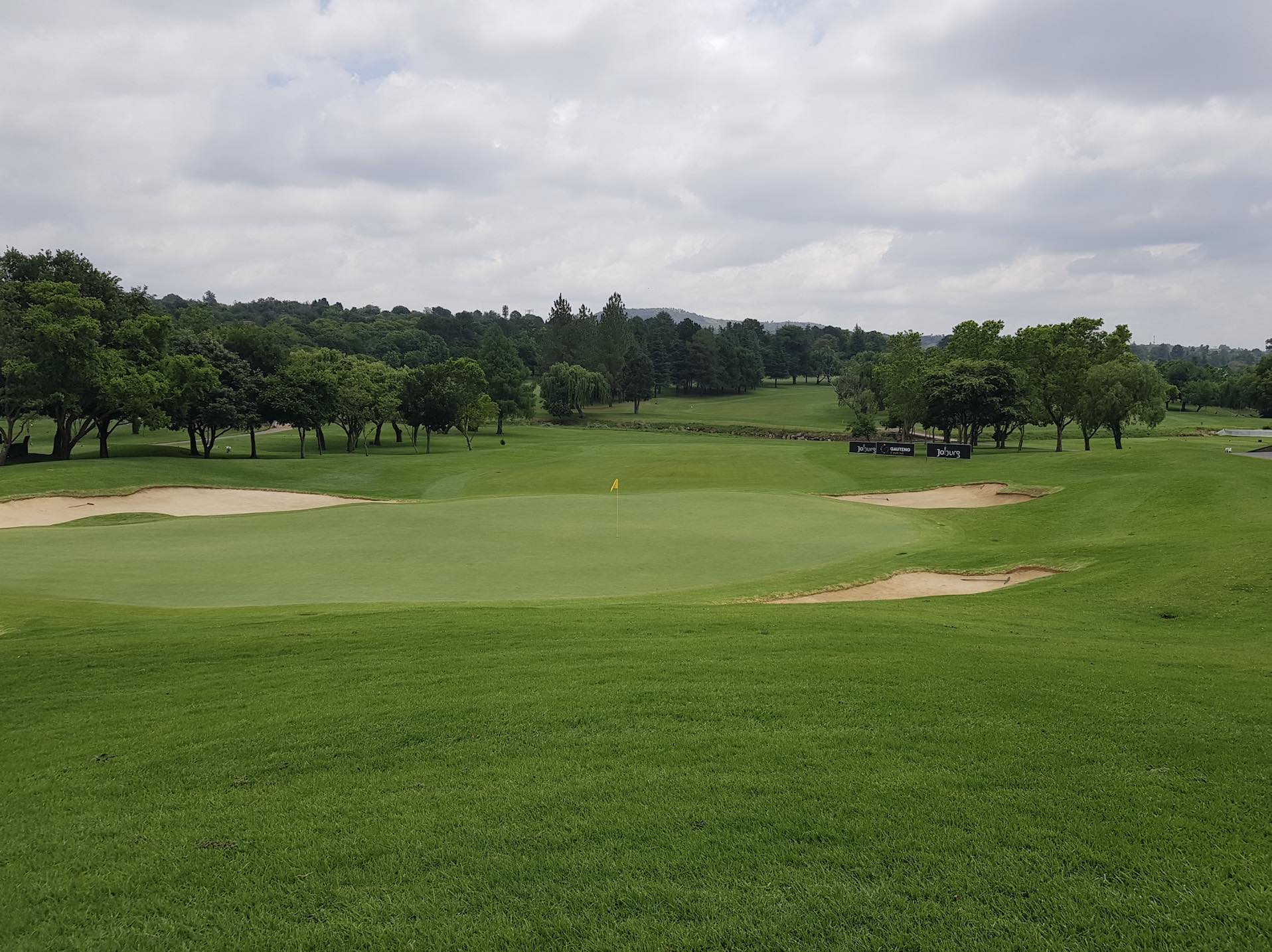
SIGNATURE HOLE
17th hole, par three, 192m
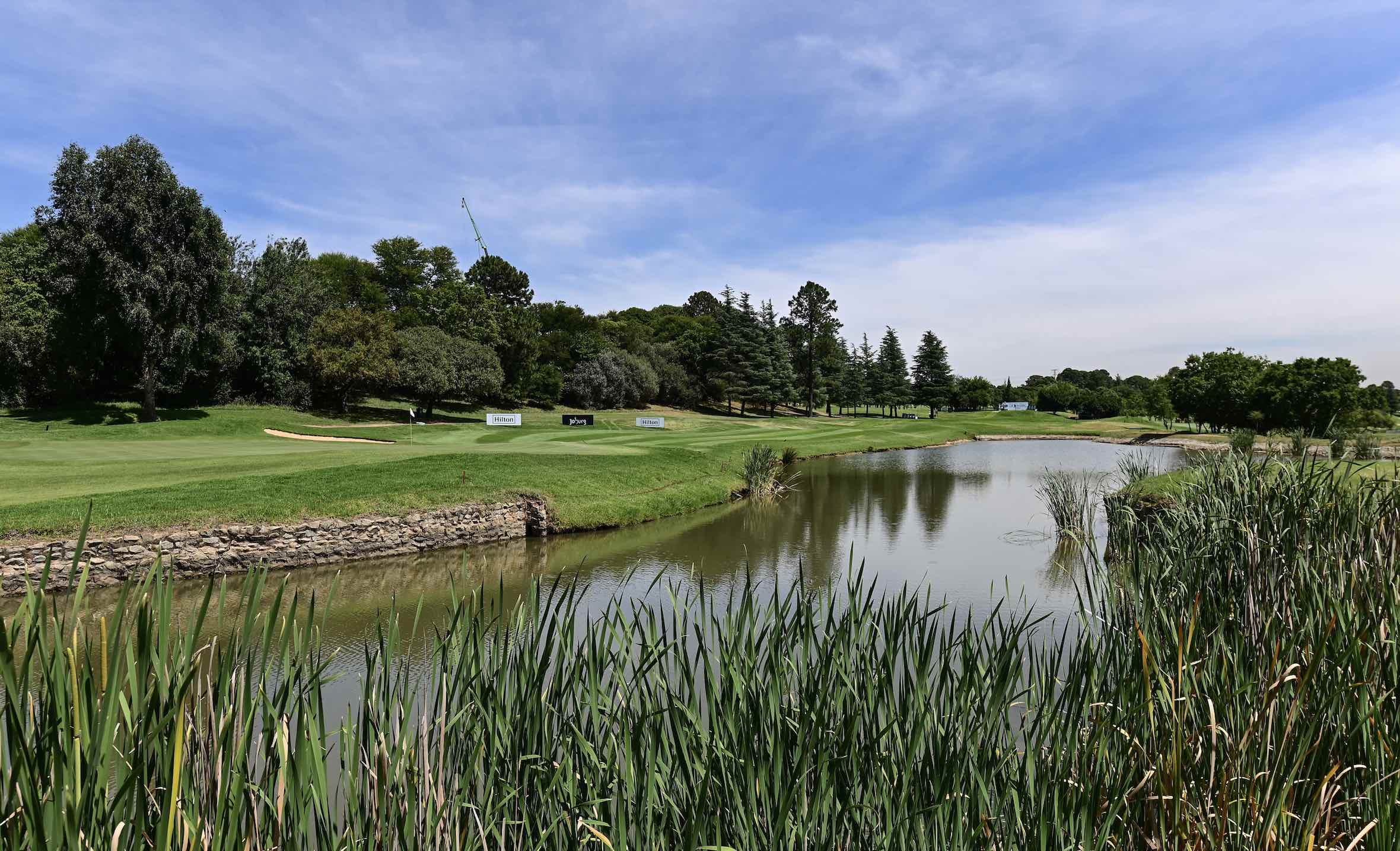
The par-three 17th epitomises the Firethorn course: long, tough and challenging. There are very few ‘short’ holes played on the European Tour that are as long or perilous.
With water all the way down the left-hand side of the hole, it’s easy to decide to keep to the right. But there’s no margin for error.
Tour-calibre players will probably opt to aim for the middle of the green and then hope to hole a putt for birdie. Most of them will be happy to walk off with a par. The birdie here is a massive bonus.
As an example, at the 2022 Joburg Open, over the final two rounds, there were only seven birdies recorded, 84 pars and 36 bogeys, along with a handful of double-bogey or worse.
Higher-handicap players can learn from copying what the professionals attempt to do. Keep the ball dry by staying away from the left.
If you feel uncomfortable with the club that you require to reach the green, being slightly short of the putting surface should leave a short chip or putt towards the pin.
Being long is no good and if you are fortunate enough to find that your ball has not found the water, you will be left with a chip from well below the level of the green.
If you catch either of the two bunkers on the right of the green your next shot will be towards the water … just what you were trying not to do.
Most players will have a handicap stroke on the hole, so if you are playing Stableford formats, be content with picking up two points for your bogey. You will probably be scoring better than half of the field.
GREENFEES
Mon-Tues | Wed-Fri | Sat-Sun
International: R500 R630 R840
Local: R450 R510 R780
Junior: R325 R380 R600
Member guest: R375 R420 R530
Cart: R440
Caddie: R230
GETTING THERE
From OR Tambo, get on the R21 in Jet Park, Boksburg from Jones Rd for 3.6km. Then take the N12, N3 Eastern Bypass/N3 and N1 Western Bypass to Beyers Naude Dr/M5 in Randpark Ridge. Take the M5/Beyers Naude Drive exit from N1 Western Bypass and drive for about 30 minutes to your destination.
GPS CO-ORDINATES
S26’06.862 E27’58.000
ADDRESS
Setperk Road, Randpark, Randburg, 2194, Gauteng, South Africa
CONTACT DETAILS
Phone: 011 215 8600 or 011 100 0640
Email: [email protected]
Website: www.randpark.co.za
– This column first appeared in the April 2023 issue of Compleat Golfer magazine.


